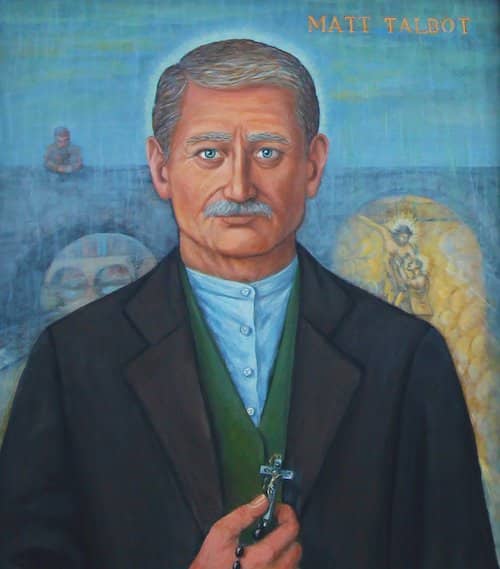(OSV News) — Advent prepares us for Jesus’ coming at Christmas and for his coming into our lives afresh. And no one knows how to get ready to welcome Christ better than the saints.
They express their love for him by putting him first in their hearts. They make room for him by clearing out the clutter of sins and faults. The saints pursue holiness by embracing the Lord’s teaching and lifestyle. They respond to his graces by practicing spiritual disciplines like prayer, Scripture study, fasting and almsgiving. And the saints express their love for God by reaching out to others with the Good News. They especially dedicate themselves to caring for the poor and marginalized.
So, let’s make the most of this Advent and spend it with four representative saints, imitating the ways that they opened their hearts to Jesus.

St. Thérèse of Lisieux (1873-1897)
The next year, when Thérèse was only 15, the bishop allowed her to join the Carmelite convent at Lisieux. She wanted to become a missionary and a martyr, but soon realized that neither option was open to a cloistered nun. So she sought the Holy Spirit for another way to serve the Lord Jesus. Reflecting on Scripture, Thérèse learned to do the loving thing in every situation, which she discovered was the fuel that fired the faith of martyrs and saints. Doing the least of actions for love became the secret of her “little way.”
What does a 19th-century nun have to do with us? Juggling the duties of family, work or school, navigating freeways and keeping up with the digital world, we don’t have much time for pursuing holiness, do we? But that’s where Thérèse sets the example for us. Her simplicity shows us that we, too, can be holy.

Venerable Matt Talbot (1856-1925)
For 16 years, Venerable Matt Talbot was a daily drunk. Then one day, an unanticipated conversion transformed him and he became a model penitent following Jesus Christ.
As a child of a poor family in Dublin, Matt had to forgo school for a job. After a year of basic education, he started working for a wine seller. And Matt started drinking heavily at the early age of 12.
His father beat him and made him change jobs — but nothing could stop Matt’s habit. He said that when he was intoxicated, he occasionally thought about the Blessed Mother and prayed an off-handed Hail Mary. Matt speculated later that she had something to do with his conversion.
One day in 1884 everything suddenly changed. Matt had been out of work several days and expected his buddies to take him drinking. When they snubbed him, he made a decision that transformed his life.
When he arrived at home, his mother said, “You’re home early, Matt, and you’re sober!” He replied, “Yes, mother, I am and I’m going to take the pledge.” The next day he went to confession and took the sobriety pledge for three months.
But Matt extended three months of going without alcohol into 41 years. In 1891, Matt found community support by joining the Franciscan Third Order. He lived the rest of his life quietly, working and praying. St. Paul VI declared him venerable in 1975.
At a time when addictions to alcohol, other drugs and pornography are running rampant, Matt Talbot stands as an exemplar of the ways to freedom and holiness through Jesus.
Blessed Anne Mary Taigi (1769-1837)
A model woman, Blessed Anne Mary managed a large household in Rome for nearly five decades. She handled finances with little money, patiently cared for a difficult extended family and entertained a constant stream of guests. She did all this full of faith and good cheer.
At age 21, Anne Mary married Domenico Taigi, a servant in a Roman palace. They had seven children, two of whom died in childbirth. Early in her marriage, Anne Mary experienced a religious conversion. She simplified her life, initiating practices of prayer and self-denial that she pursued the rest of her life in following Jesus Christ.
Anne Mary took the spiritual lead in her family. The day began with morning prayer and Mass, and ended with reading lives of the saints and praying the rosary. The Taigis had little of their own, but Anne Mary always found ways of providing for those who had less. She also took in her hard-to-get-along-with parents and her widowed daughter, Sophie, with her six children.
Domenico’s violent temper often disrupted the family. But Anne Mary was always able to calm him and restore peaceful relationships. In his old age, Domenico gave this touching tribute to his wife:
“With her wonderful tact she was able to maintain a heavenly peace in our home. And that even though we were a large household full of people with very different temperaments.
“I often came home tired, moody and cross, but she always succeeded in soothing and cheering me. And due to her, I corrected some of my faults. If I were a young man and could search the whole world to find such a wife, it would be vain. I believe that God has received her into heaven because of her great virtue. And I hope that she will pray for me and our family.”
We may imagine that becoming a saint requires heroics like founding a religious order or converting people in faraway places who have never heard of the Gospel. But Blessed Anne Mary shows us that the daily faithful care of a family requires more than enough heroism to make us holy.

Blessed Pier Giorgio Frassati (1901-1925)
Pope St. John Paul II celebrated Blessed Pier Giorgio Frassati as a man of the Beatitudes. Athletic and strong, he devoted himself to the weak and malformed. He was wealthy, but he lived in poverty so he could give everything to the poor. He was gregarious, but a lover of solitude. He was rambunctious, the life of every party, and a practical joker, but at prayer he was solemn, reflective and quiet.
As a teenager, Pier Giorgio made friends of the poor in Turin’s back streets and gave them whatever he had — his money, his shoes, his overcoat. “Jesus comes to me every morning in holy Communion,” he replied to a friend who asked why the hovels did not repulse him. “I repay him in my very small way by visiting the poor. The house may be sordid, but I am going to Christ.”
Pier Giorgio saw the need for social change to relieve the causes of poverty. At the university, he decided to major in mechanical engineering so that he could work with miners, who were especially disadvantaged. He was a leader in student political organizations and actively opposed Benito Mussolini and the Fascists.
At the same time, he was the organizer of student parties, games and ski trips to the Alps, where he would lead his friends in prayer. Afterward, they relaxed and enjoyed food, wine, cigars and songs.
Blessed Pier Giorgio has become the hero of contemporary young Catholics. They recognize his high Christian ideals, still held while pursuing the same pleasures that they enjoy. They gravitate to this handsome and charming saint who delighted in reciting the poetry of Dante, praying the rosary in a booming voice and spending a night in adoration of the Blessed Sacrament.
Christ’s final coming
Advent anticipates not only Jesus’ coming to us as a baby, but it also expects his final coming in glory. Since the Father alone knows the day of the end, the Lord cautioned us always to be watchful and to conduct ourselves in uprightness. When Jesus comes as the Bridegroom to wed the church, we do not want to be as unprepared as the five foolish virgins in the parable (see Mt 25:1-13).
So this Advent, following the saints, may we decide always to love God above all and to do the loving thing in every circumstance.







